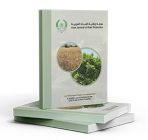M.A. Ahmad, A.M. Basheer* and G.S. Ibrahim
Department of Plant Protection, Faculty of Agricultural Engineering, Damascus University, Syria.
Email address of the corresponding author: [email protected]
Received: 28/4/2024; Accepted: 15/8/2024
A Regional Scientific Journal Published Four Times a Year by the Arab Society for Plant Protection
M.A. Ahmad, A.M. Basheer* and G.S. Ibrahim
Department of Plant Protection, Faculty of Agricultural Engineering, Damascus University, Syria.
Email address of the corresponding author: [email protected]
Received: 28/4/2024; Accepted: 15/8/2024
This study was carried out in 2023 to determine the degree of genetic relationship between 17 ecotypes of purple nutsedge using ISSR (Inter simple sequence repeats) technology based on the polymerase chain reaction (PCR). For this purpose, 17 Primers were used, 15 of which proved effective in showing polymorphism between the studied ecotypes. Their use resulted in a total of 62 bands, and the lowest number of bands was 2 bands with the primer ISSR5 and 6 bands as the highest number with the primer ISSR2, and the polymorphism rate reached 94.77%. It was also found that the highest PDV value of the PDV matrix of concordance was 0.9886 between the two ecotypes (Faculty of Agricultural Engineering, Damascus University and Safita), which indicated the presence of large genetic variation between them, whereas the lowest PDV value was 0.2348 between the two ecotypes Shahba and Al-Mazraa from Suwayda Governorate, suggesting that they have a high degree of genetic relationship. The Dendrogram tree was split into two main clusters, the first cluster included the types collected from the southern region (College of Agricultural Engineering, Damascus, and Shahba Al-Mazraa, Suwayda Governorate), and they have a high degree of genetic relatedness, and the second included the types collected from Daraa and Khan Arnaba (Quneitra Governorate). The second cluster was divided to two subclusters, the first subcluster included the genotypes from Latakia and Tartous governorates, whereas the second subcluster included the genotypes collected from the central region (Hama city and Wadi Al-Uyun, Hama governorate) and Talkalakh – Fahel from Homs governorate. The studied ecotypes of purple nutsedge were gathered in clusters based on their geographical distribution.
Purple nutsedge, Cyperus rotundus, genetic relationship, ISSR, Syria

